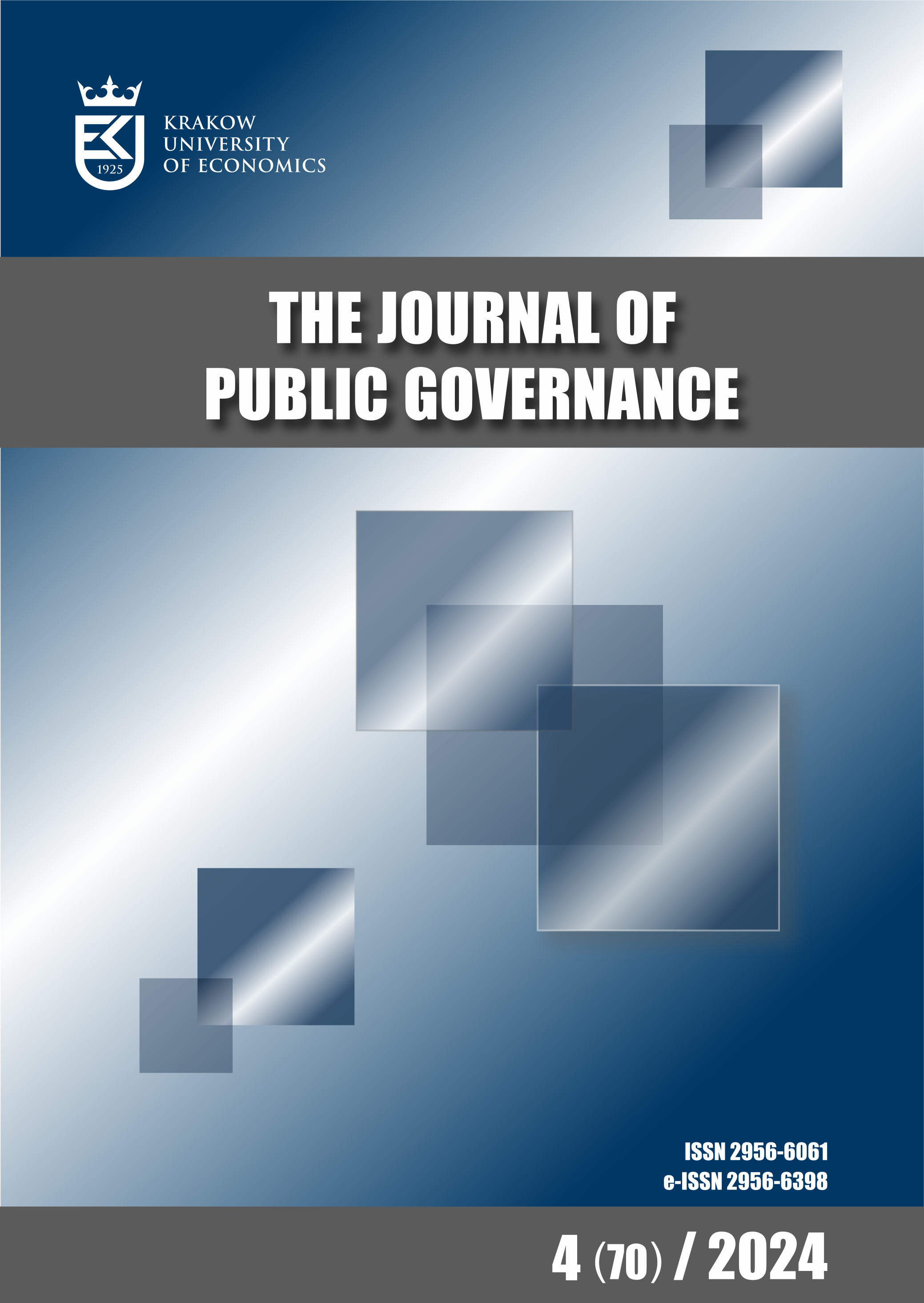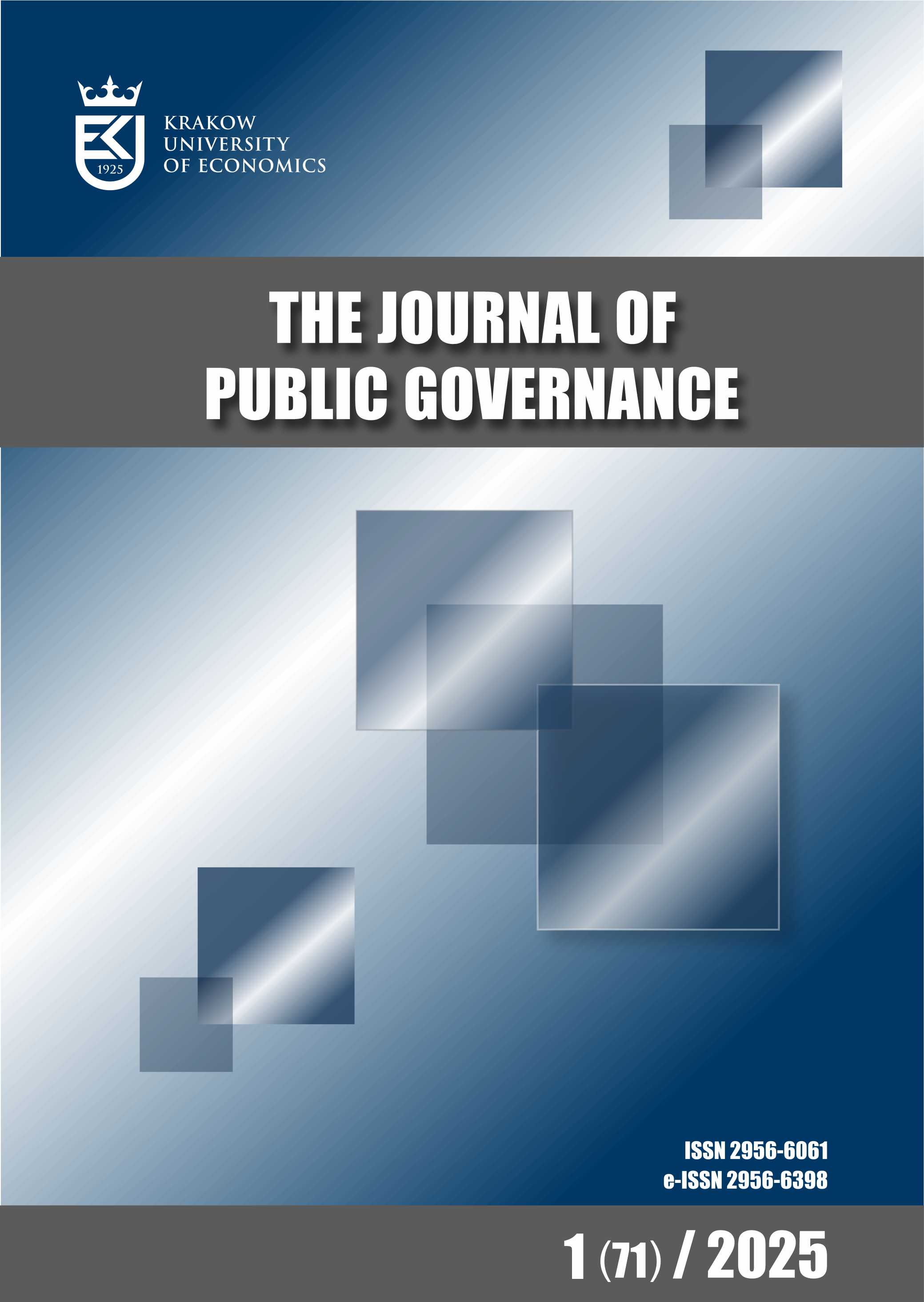Digital Transformation in Public and Non-Public Medical Diagnostic Entities in Poland: An Overview of Solutions
DOI:
https://doi.org/10.15678/PG.2024.70.4.02Keywords:
medical diagnostics, public and non-public sector, public-private partnership, IT governance, digital transformation, e-healthAbstract
Objective: Digitisation and digitalisation are among the key developments in contemporary health care, including medical diagnostics, shaping the way diagnostic entities operate in both the public and private sectors. This article focuses on the theoretical analysis of digitisation processes in diagnostic units, with a particular focus on Information and Communications Technologies (ICTs) management and their impact on the efficiency of medical services.
Research Design & Methods: The conducted analysis is based on a critical review of the literature on e-health, health IT management, and the digital transformation of medical diagnostics in the public and private sectors. Key areas of investigation include electronic medical records, telemedicine systems, artificial intelligence applications, and the Internet of Things within diagnostic facilities.
Findings: The review indicates that implementing electronic medical records, telemedicine systems, artificial intelligence, and the Internet of Things significantly increases staff productivity and operational efficiency
in diagnostic facilities. At the same time, considerable challenges were identified, such as staff resistance to change, the need to ensure the interoperability of systems, and guaranteeing a high level of patient data security.
Implications / Recommendations: The conclusions of the analysis highlight the key role of effective IT management and institutional support in fully exploiting the potential of digitisation and digitalisation. Suggestions for
recommendations for policymakers and health care managers were also formulated, targeting the strengthening of public–private partnerships (PPPs) as a strategic tool to support further digitisation of medical diagnostics.
Contribution / Value Added: This work synthesises diverse strands of literature into a coherent theoretical framework for ICT management in medical diagnostics.
JEL classification: I18, L86, O33, M15, L15, L33.
Downloads
References
Agarwal, R., Gao, G., DesRoches, C., & Jha, A. K. (2010). The Digital Transformation of Healthcare: Current Status and The Road Ahead. Information Systems Research, 21, 796–809.
Ayat, M., Sharifi, M., & Jahanbakhsh, M. (2017). The maturity assessment of hospital information systems based on Electronic Medical Record Adoption Model: A comparison between private and governmental hospitals. Journal of Hospital Administration, 6(2), 74–80.
Batko, K. (2016). The possibilities of using big data in health care. Collegium of Economic Analysis Annals, 42, 267–282.
Baudier, P., Ammi, C., Kondrateva, G., Chang, V., & Schiavone, F. (2021). Covid-19 and teleconsultation: A cross-countries analysis. Technological Forecasting and Social Change, 163, 120510.
Bera, K., Schalper, K. A., Rimm, D. L., Velcheti, V., & Madabhushi, A. (2019). Artificial intelligence in digital pathology – new tools for diagnosis and precision oncology. Nature Reviews Clinical Oncology, 16, 703–715.
Boonstra, A., & Broekhuis, M. (2010). Barriers to the acceptance of electronic medical records by physicians from systematic review to taxonomy and interventions. BMC Health Services Research, 10, 231.
Centers for Medicare & Medicaid Services (2020). Medicare Telemedicine Health Care Provider Fact Sheet. https://www.cms.gov/newsroom/fact-sheets/medicare-telemedicine-health-care-provider-fact-sheet
Centers for Medicare & Medicaid Services (2021). Promoting Interoperability Programs. https://www.cms.gov/medicare/regulations-guidance/promoting-interoperability-programs
Eckert, M., Volmerg, J. S., & Friedrich, C. M. (2019). Augmented reality in medicine: Systematic and bibliographic review. JMIR mHealth and uHealth, 7(4), e10967.
Eden, R., Burton-Jones, A., Scott, I., Staib, A., & Sullivan, C. (2018). Effects of eHealth on hospital practice: synthesis of the current literature. Australian Health Review, 42(5), 568–578.
European Union Agency for Cybersecurity – ENISA (2023). ENISA Threat Landscape: Health Sector. ENISA Report, July 2023. https://www.enisa.europa.eu/sites/default/files/publications/Health%20Threat%20Landscape.pdf
Eysenbach, G. (2001). What is e-health? Journal of Medical Internet Research, 3(2), E20.
Gjellebæk, C., Svensson, A., Bjørkquist, C., Fladeby, N., & Grundén, K. (2020). Management challenges for future digitalization of healthcare services. Futures, 124, 102636..
Gopal, G., Suter-Crazzolara, C., Toldo, L., & Eberhardt, W. (2019). Digital transformation in healthcare – architectures of present and future information technologies. Clinical Chemistry and Laboratory Medicine, 57(3), 328–335.
Grabiec, M. (2022). How to standardise medical records using the Polish HL7 CDA National Implementation. Medical Documentation in Practice.
Kraus, S., Schiavone, F., Pluzhnikova, A., & Invernizzi, A. C. (2021). Digital transformation in healthcare: analyzing the current state-of-research. Journal of Business Research, 123, 557–567.
Libura, M., Imiela, T., & Głód-Śliwińska, D. (eds.) (2023). Cyfryzacja zdrowia w interesie społecznym. Okręgowa Izba Lekarska w Warszawie.
Marques, I. C., & Ferreira, J. J. (2020). Digital transformation in the area of health: Systematic review of 45 years of evolution. Health Technology, 10, 575–586.
OECD (2020). Health in the 21st Century: Putting Data to Work for Stronger Health Systems. OECD Publishing.
OECD (2023). Health at a Glance 2023: OECD Indicators – Chapter on Digital Health. OECD Publishing.
Moumtzoglou, A., & Kastania, A. N. (Eds.) (2014). Cloud Computing Applications for Quality Health Care Delivery. IGI Global Scientific Publishing.
Sood, S. P., Negash, S., Mbarika, V. W. A., Kifle, M., & Prakash, N. (2007). Differences in public and private sector adoption of telemedicine: Indian case study for sectoral adoption. Studies in Health Technology and Informatics, 130, 257–268.
Topol, E. (2016). The Patient Will See You Now: The Future of Medicine is in Your Hands. Basic Books.
Topol, E. (2019). Deep Medicine: How Artificial Intelligence Can Make Healthcare Human Again. Basic Books.
Webster, J., & Watson, R. T. (2002). Analyzing the past to prepare for the future: Writing a literature review. MIS Quarterly, 26(2), xiii–xxiii.
World Health Organization (2021). Global strategy on digital health 2020–2025. WHO Press. https://www.who.int/docs/default-source/documents/gs4dhdaa2a9f352b0445bafbc79ca799dce4d.pdf
World Health Organization (2023). WHO and HL7 collaborate to support adoption of open interoperability standards. WHO news release. https://www.who.int/news/item/03-07-2023-who-and-hl7-collaborate-to-support-adoption-of-open-interoperability-standards
Downloads
Published
Issue
Section
License
Copyright (c) 2024 Krakow University of Economic

This work is licensed under a Creative Commons Attribution 4.0 International License.



